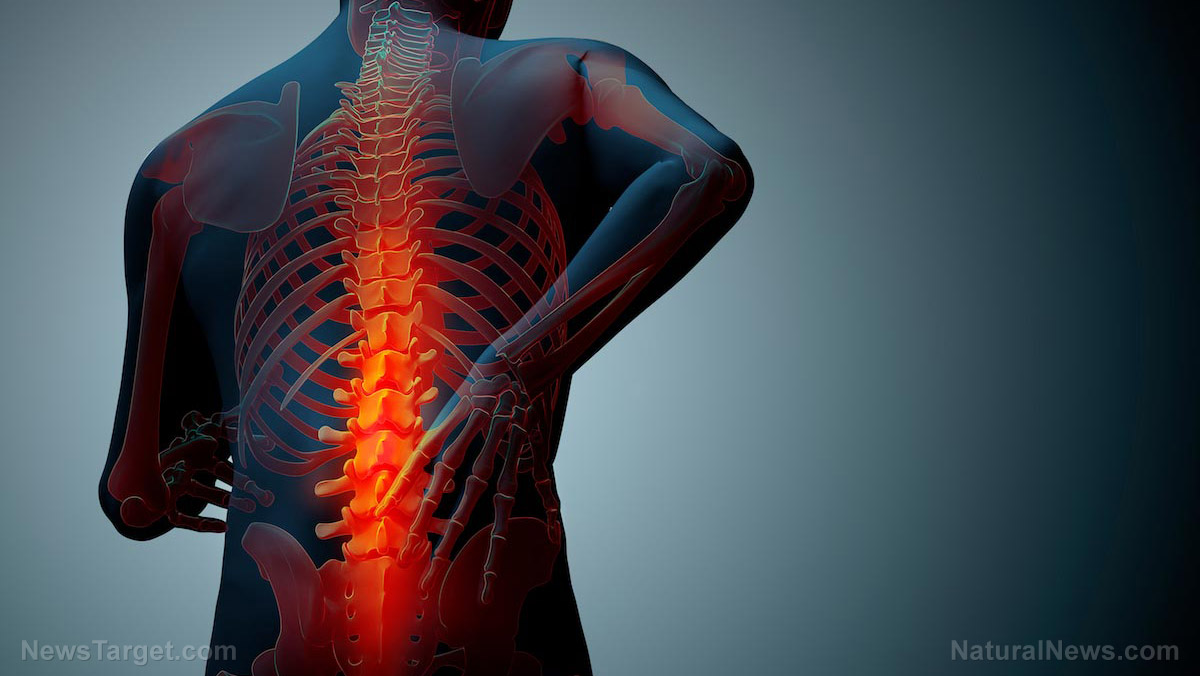Thursday, April 17, 2025
Here are some of the most common causes of backaches and effective ways to avoid them
11/07/2018 // Michelle Simmons // 6.9K Views
Tags: back pain, back pain causes, backache prevention, backache treatment, backaches, goodhealth, how-to, natural remedies, Natural Treatments, pain management, pain relief

- Deformities: People with scoliosis, wherein the spine deviates to the side, or kyphosis, wherein the spine bends forward, suffer from a backache. Chronic misalignment of the vertebral column can cause tremendous stress and strain on the surrounding supportive muscles, resulting in a backache.
- Degenerative disc disease: When the discs or "shock absorbers" between the spine’s vertebrae shrink or tear out, the bones will rub together, causing pain in the back.
- Herniated or slipped disc: A slipped disc occurs when the soft tissue in the discs between your joints has come out. This is usually caused by wear and tear. It can put pressure on the surrounding nerves and cause pain, tingling sensation, and numbness in the legs.
- Occupational: Many jobs today require standing, lifting heavy weights, or sitting in an uncomfortable position for several hours, which can result in back pain.
- Poor posture: This is the most common cause of back pain, which can be triggered by sudden lifting of weights, a fall on the back, a sudden turn or wrench, or sitting in a cramped position for a long time. Doing certain activities, such as standing, sitting, or walking, improperly might trigger back pain.
- Spinal Stenosis: The spinal cord passes through the spinal canal. This will put pressure on the spine and nerves if it becomes narrow, resulting in numbness in the legs and shoulders and pain in the back.
- Trauma or injuries: Back pain can also be caused by traumas and injuries, such as accidents, falls, muscle sprains, strains, and fractures.
Preventing backache
Here are some tips you can try to prevent a backache:
- Exercise regularly to strengthen the back and avoid the risk of developing a backache.
- Eat foods rich in calcium, vitamin D, phosphorus, and proteins – these help build and repair bones and muscles.
- Do not wear high heels for extended periods.
- Do not sit for long hours. Get up and try to walk around every hour.
- Do not stand for long hours. If you have to, stand properly, making sure that your ears, shoulders, hips, and knees are in the same straight line.
- Bend and lift objects properly.
- If you have to sit for long hours, make sure your chair has a high back that supports your back curvature properly. Use a pillow if necessary.
- Practice stress management.
Natural remedies for back pain
If you're already suffering from back pain, do not use drug pain relievers. Natural remedies are enough to treat most backaches. (Related: 7 Ways to Naturally Reduce Back Pain.)
Here are some natural remedies you can try:
- Exercise: Exercise both prevents and treats a backache. It may loosen tense muscles and release endorphins, the brain's natural painkillers.
- Use a heating pad or ice packs: Research has shown that heat and cold effectively relieves back pain. Ice packs are best used immediately after an injury because they reduce inflammation and provides a numbing effect, while a heating pad provides relieve stiff or achy muscles.
- Get a good night's sleep: Studies have shown that sleep disturbances worsen a backache, while lack of sleep affects a person's pain tolerance. Sleep for seven to nine hours and sleep in a comfortable bed and bedroom.
Sources include:
Related Topics
back pain back pain causes backache prevention backache treatment backaches goodhealth how-to natural remedies Natural Treatments pain management pain reliefLatest News
Related News
07/06/2022 / By Mary Villareal
06/04/2022 / By Ethan Huff
04/08/2021 / By Virgilio Marin
09/10/2020 / By Virgilio Marin
06/16/2020 / By Zoey Sky
06/10/2020 / By Zoey Sky
0 Comments
Please sign in with your Brighteon account to leave comments
Not a user, Create your FREE account today.
Learn more about our new comment system.
Sign Up
Take Action:
Support Natural News by linking to this article from your website.
Permalink to this article:
Copy
Embed article link:
Copy
Reprinting this article:
Non-commercial use is permitted with credit to NaturalNews.com (including a clickable link).
Please contact us for more information.
Please contact us for more information.























